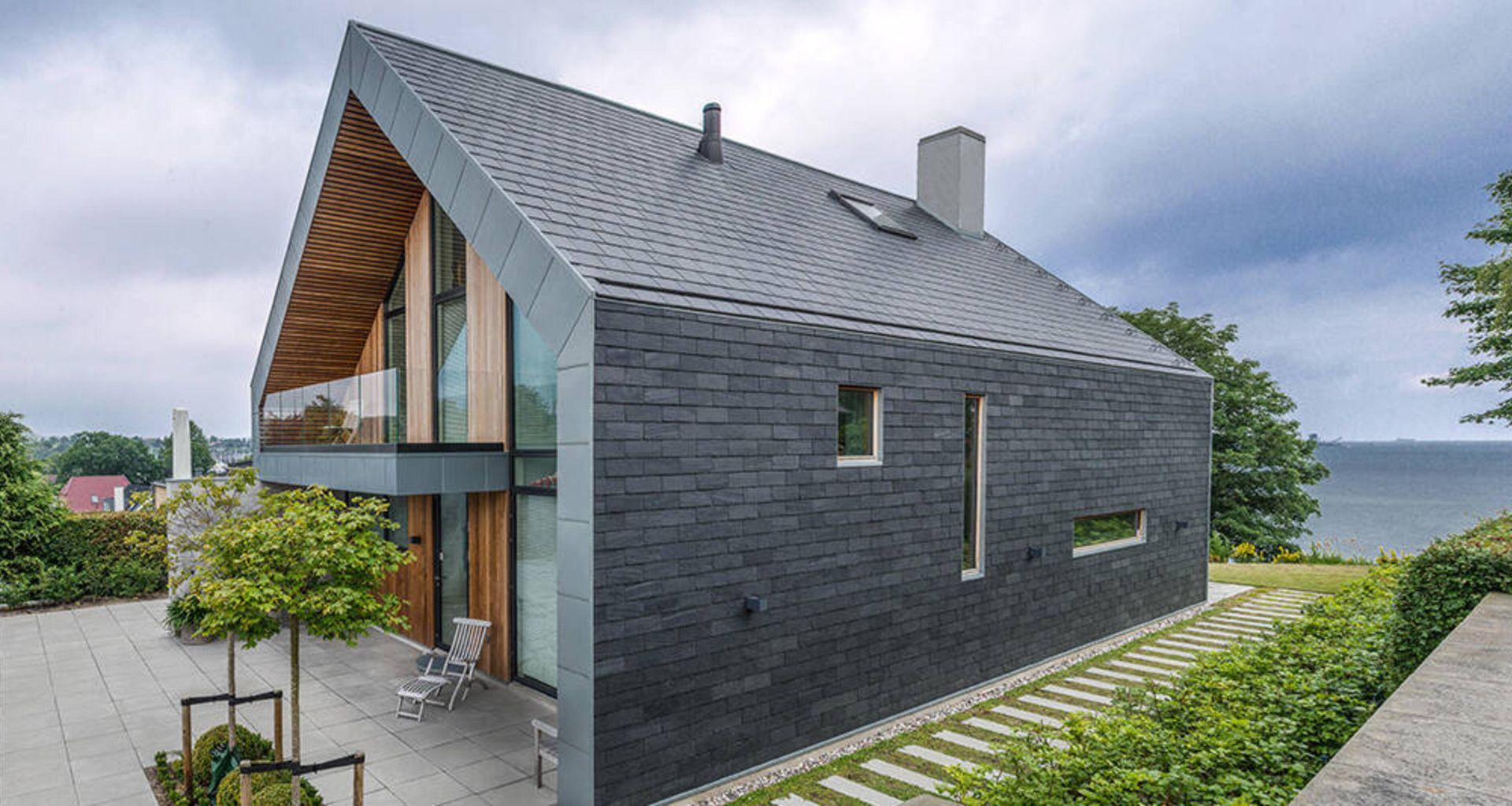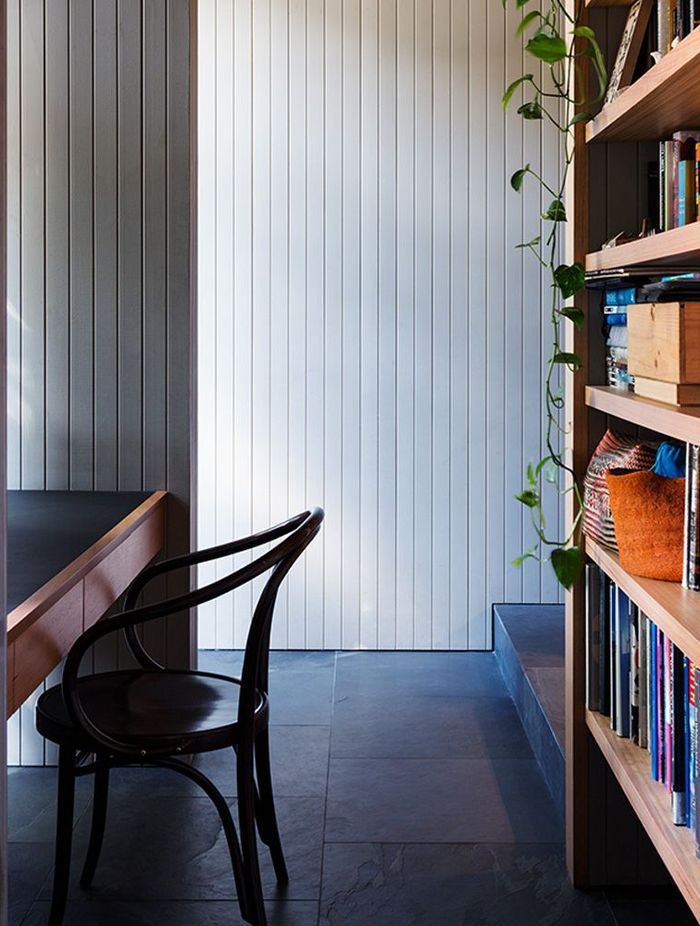Are slate tiles expensive? A detailed look

Slate tiles are on the higher end of natural stone materials, with costs influenced by the type of slate you choose, the cost of labour for installation, and the complexity of the project. In this article, we’ll break down pricing, and provide you with a concise guide to understanding why slate may be a smart investment for whatever project you choose it for.
What are slate tiles?
Slate tiles, crafted from natural slate—a fine-grained metamorphic rock formed over centuries through the compression of clay and volcanic ash—are premium roofing materials. Distinguished by their remarkable durability and unique appearance, these tiles come in a spectrum of colours including grey, green, blue, purplish, and black, supporting diverse design preferences.
Notably, each tile's texture and colour are unique, contributing to the aesthetic value of the roof. A slate tile's lifespan exceeds 100 years, maintaining its colour with minimal maintenance required. Furthermore, the production of slate tiles is environmentally friendly, as it avoids the use of chemicals or additional treatments, leveraging the material's natural properties.
Related article: 18 striking types of tiles to consider for your home
How much do slate tiles cost?
The price range of slate tiles largely depends on the application they are being used for.
Flooring - slate tile floors start at around $65+ per square metre.
Wall tiling - slate tiling for walls starts at around $40+ per square metre
Roofing - can cost anywhere from $50 - $200+ per square metre.
How much does it cost to get slate tiles installed?
The price of installation depends on the contractor you use. Most tilers in Australia quote by the hour or peer square metre. Quotes by the metre can vary from $30 - $150 depending on the expertise of the tiling professional. Hourly rates range from $40 - $100 per hour.
Other factors impacting the price of slate tiles
Type of slate
The specific type of slate chosen for a project can greatly affect its cost. Natural slate tends to be the most expensive option. Synthetic slate, which is made from engineered materials such as rubber and plastic composites and mimics the look of slate, is lower in price. A solid midway option to consider is hybrid slate, which typically incorporates real slate dust or chips into a synthetic mix, giving the tile a more authentic look and feel than synthetic slate achieves.
Complexity of the job and customisation
As with any construction or repair work the complexity of the job in hand heavily dictates price. For example, if you're having slate tiles installed on a roof and there are multiple levels or angles present then intricate detailing may be required which can contribute to increased labour time. In addition, if you require custom sized or shaped tiles then expect to pay more.
Availability in your area
Lastly, the availability of slate tiles in your specific geographic location can impact their price. Transporting slate tiles over long distances can add a significant amount to the overall cost due to shipping fees. Also, the demand for slate in your area, coupled with the supply chain's efficiency in delivering these materials, can fluctuate prices. In regions where slate is less commonly used or harder to obtain, prices may be higher due to these logistical challenges.
Related article: Choosing the right fit: An overview of floor tiles sizes in Australia
What are the main advantages of slate?
Lifespan and maintenance requirements
As we mentioned earlier slate can comfortably last over 100 years. It's also relatively low maintenance. For slate floors regularly cleaning with mild detergent and water is sufficient, as well as checking regularly for any cracks in individual tiles. If you have a slate roof regular inspections, ideally once per year are sufficient to keep on top of any issues that arise.
Natural appearance
Slate is a material that retains its natural appearance over time. It' s colouration is also consistent throughout every piece. Over time rich, unique patinas can develop as the result of gradual weathering and oxidation of minerals, which add character and depth to the material. Slate also has a natural sheen and reflects sunlight giving it a subtly radiant quality.
Fire resistant properties
Slate is formed from shale under conditions of high pressure and heat, which inherently makes it non-combustible. It also has a high-melting point meaning it can withstand exposure to high temperatures without melting or disintegrating.
Water resistance
Slate's ability to resist water comes from its tight, compact structure, which doesn't let much water in, a feature measured by a very low water absorption rate (less than 0.4%). This means slate is great at staying intact in wet conditions, avoiding common problems like cracking from freezing and thawing cycles, or the growth of mould and mildew. For homeowners or builders, this translates to less worry about weather damage and lower maintenance, especially for roofs or outdoor areas.
How does slate compare to other roofing and tile materials?
To make an informed decision its important to have a general idea of how slate compares to other tile and roofing materials in terms of lifespan, cost and maintenance.
Life span
Roofing
Slate tops the chart for lifespan compared to other roofing materials. As previously mentioned, slate can last well over one hundred years. Other popular roofing materials, such as asphalt shingles, have a lifespan of around fifteen to thirty years, while metal roofing offers a midway point between the two, with a lifespan of forty to seventy years.
Flooring
Slate offers greater longevity than other flooring materials. Hardwood floors can last around fifty to seventy-five years with proper care, similar to other forms of tiles such as ceramic or porcelain.
Cladding
Other materials, such as brick, have a similar longevity profile to slate. Brick can last around one hundred years. Materials such as timber weatherboards will last around twenty to forty years, while forms of metal cladding have lifespans of around forty to seventy years.
Cost
Roofing
Slate is one of the most expensive roofing materials available. Asphalt shingles represent the most cost-effective roofing option, while various forms of metal roofing fall into the mid-range cost category.
Flooring
Similar to roofing, slate is at the higher end of the price spectrum for flooring materials. Other premium materials, such as certain types of hardwood, can cost as much as or sometimes more than slate. Meanwhile, options like laminate, vinyl, and various forms of hybrid flooring are more affordable.
Cladding
Slate cladding is a premium choice for a home's exterior, offering long-term investment benefits due to its low maintenance requirements and exceptional lifespan. Brick is slightly less expensive, while materials such as weatherboards and some types of metal cladding present more cost-effective options.
Maintenance
Roofing
Slate roofing requires minimal maintenance, mainly needing inspections to identify and replace damaged tiles. Asphalt shingles may require more frequent maintenance and replacement due to weather-related wear and tear. Metal roofing needs occasional maintenance to prevent rust and ensure that fasteners and seams are secure.
Flooring
Slate floors are relatively easy to maintain, requiring sealing upon installation and periodic resealing. Ceramic tiles require regular cleaning, with attention needed for grout lines to prevent staining and mould growth. Hardwood flooring needs more maintenance, including periodic refinishing, and is more susceptible to moisture damage than slate or ceramic.
Cladding
Slate cladding shines in terms of maintenance. It's virtually maintenance-free, with only occasional cleaning recommended. Bricks require cleaning and periodic repointing to maintain structural integrity. Weatherboards are relatively high maintenance, requiring regular painting or staining to prevent decay. Metal cladding forms, such as aluminium and steel, are low maintenance, with regular inspections for rust and corrosion being the main maintenance steps.
Related article: 10 popular types of cladding in Australia
A striking tile choice
Slate is an interesting material, suitable for your roof, floor, interior or exterior cladding, and more. Whether it's expensive or not really depends on your budget and what you're looking for in a material. When estimating how much slate will cost for your project, remember to factor in the price of the material, installation costs, and labor. If you can nail these three aspects, you'll be well on your way to ensuring your project falls within your expected costs.



